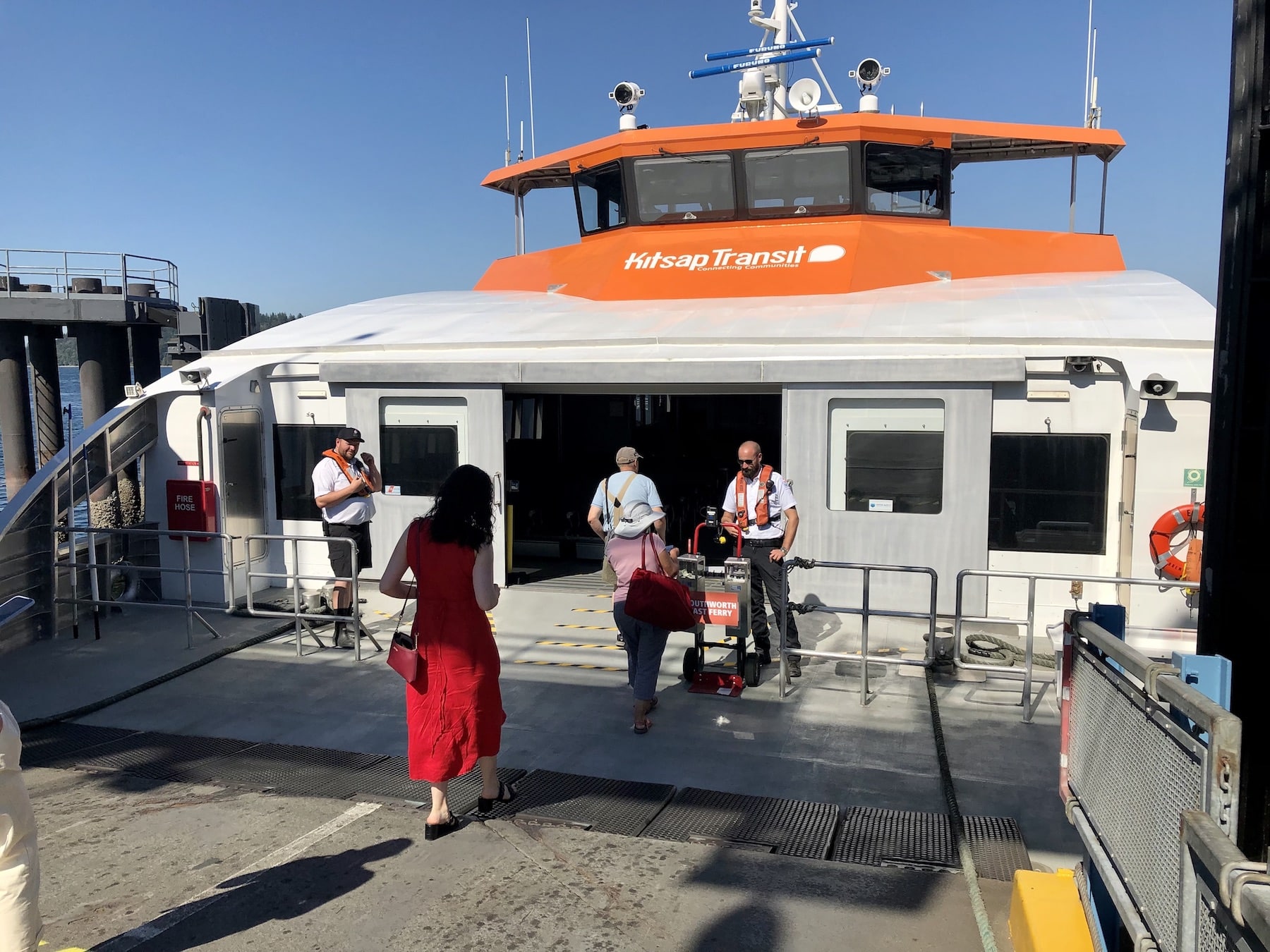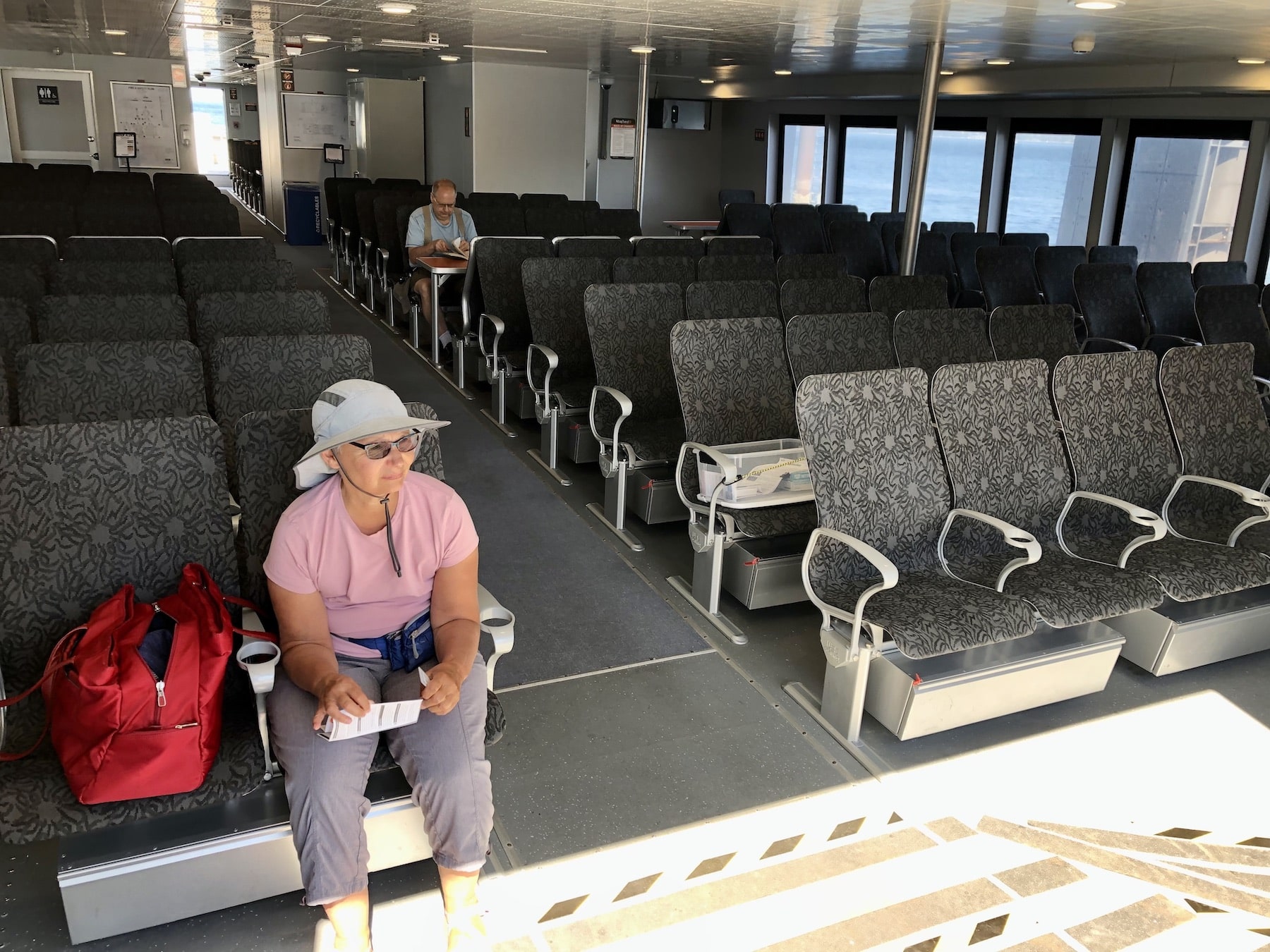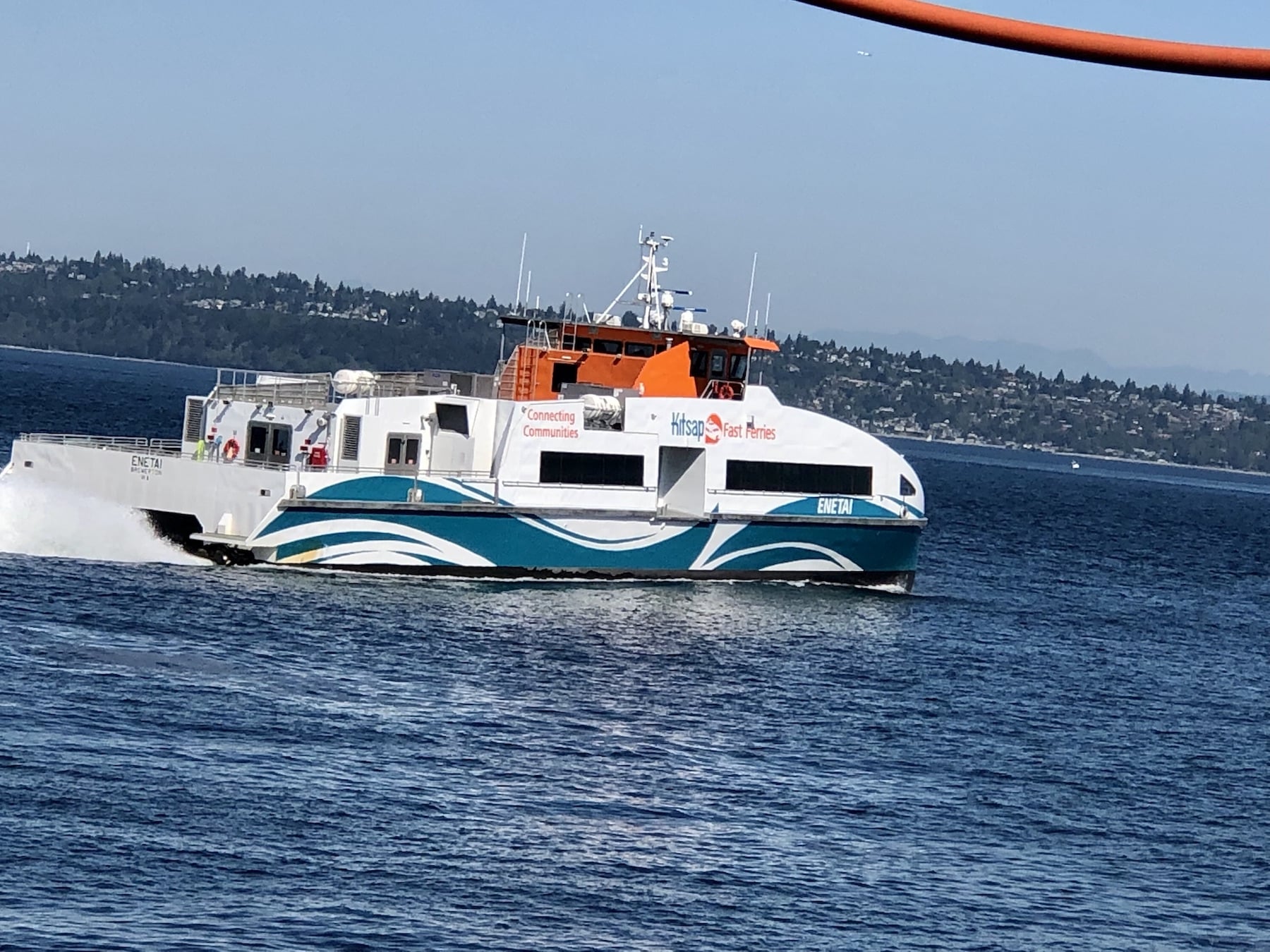Transportation
Southworth fast ferry offers alternative to driving to downtown Seattle
Despite the building of a second Narrows Bridge, new Nalley Valley viaduct and lanes through Tacoma, the drive between Gig Harbor and Seattle can still be onerous. There are alternatives. They won’t work for everybody, or even most people, but could be just right for some.
One is the relatively new Southworth passenger ferry. Kitsap Transit launched the service in March 2021, after establishing routes from Bremerton and Kingston.
The foot ferry, which makes the trip across Puget Sound in 26 minutes, is supported by fares and a Kitsap County sales tax of 3 cents per $10 purchase. The 250-passenger hydrofoil Enetai travels between Washington State Ferries’ Southworth car ferry dock and the Pier 50 passenger ferry facility beside the state’s Colman Dock in downtown Seattle.
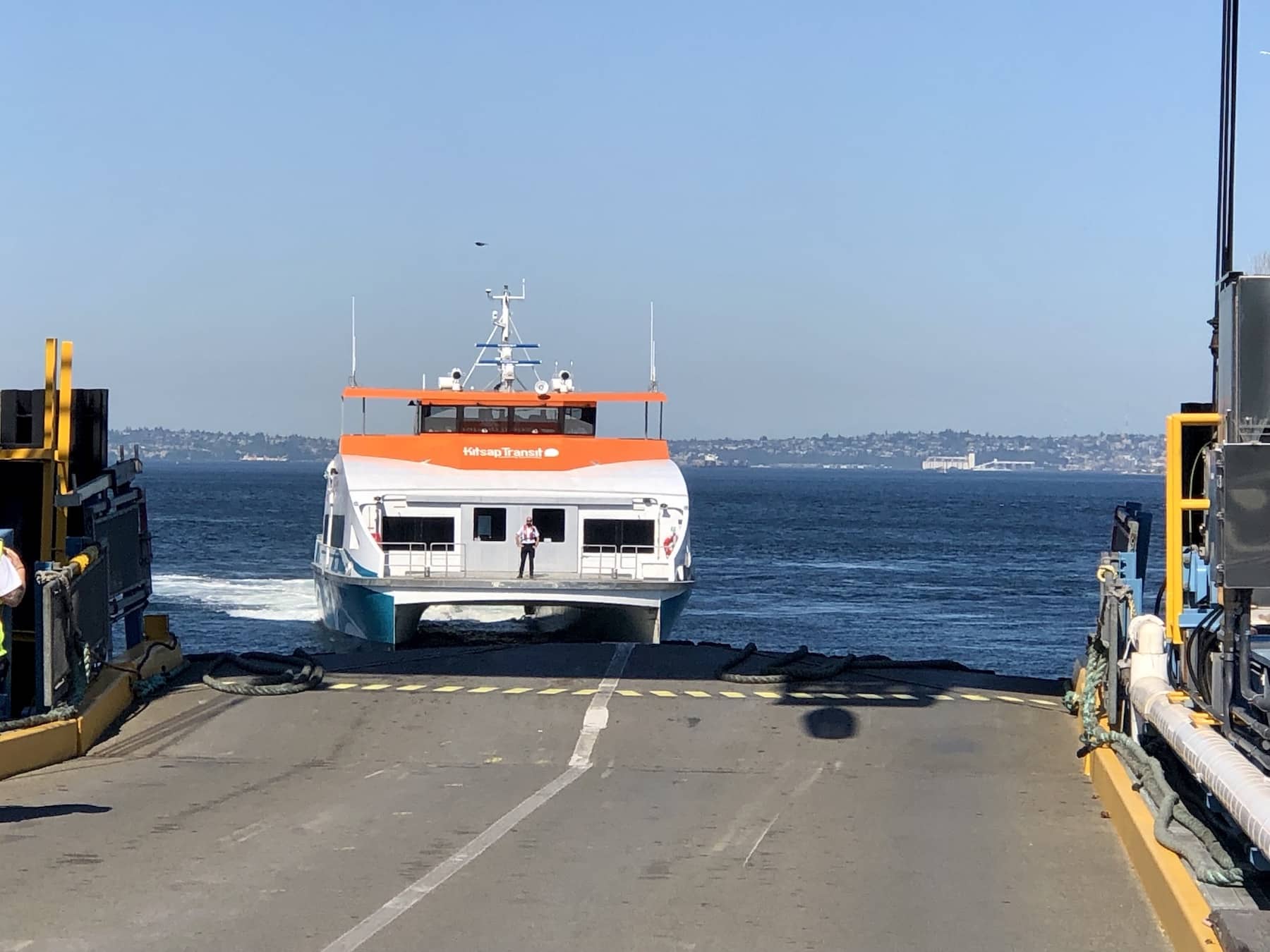
Kitsap Transit passenger ferry Enetai pulls into Washington State Ferries’ Southworth dock Wednesday, Aug. 17.
Among Gig Harborites who have found the fast ferry to their liking are Adam Bien and June Blender.
Bien’s trip from Gig Harbor takes 1 hour, 20 minutes
Bien, 47, is a finance manager at Weyerhaeuser headquarters in Pioneer Square. Like many employees nowadays, he works mostly from home, but jumps on the 5:10 a.m. first boat out of Southworth a couple times a month. He drives 15 minutes down Highway 16 to the Mullenix Road park-and-ride lot, where he catches the 20-minute Mullenix Express bus to the dock. (The main park-and-ride, at Harper Church, is about a mile from the water.) Parking is free. Bus fare is $2. After a 26-minute boat ride, he walks 7 minutes to the office.
“Door to door, from closing my garage to walking into my office, it’s an hour and 20 minutes,” he said.
Before the ferry began operating, Bien commuted on Sound Transit’s Express 595 bus from the Kimball Drive park-and-ride, which on a good day took 75 minutes to Seattle and between 1 ½ to 2 hours coming home.
“It’s by far a more pleasant commuting experience for me, and at least in the evenings on the return leg it’s a faster commute than the bus,” he said. “It’s fantastic. You don’t have the wear and tear of being on a bus, being on I-5. It’s pleasant. By far it’s my preferred method of commuting.”
Including walk to Westlake, Blender’s commute is 90 minutes
Blender, like Bien, only appears in her Westlake office about twice a month. She used to drive one to two hours on the freeway, depending on traffic. Now she heads the other direction via Peacock Hill, Olalla Valley, Banner and Sedgwick roads to Southworth, where she pays $5 to park right at the dock.
“It’s a lovely drive with very little traffic,” she said. “It takes about a half hour.”
She walks 30 minutes from the waterfront to her Amazon office, though she could cut some time if she grabbed a bike or city bus instead of enjoying the stroll. The total commute time is about 90 minutes.
“It’s much nicer to take the ferry, not to sit in that stop-and-go traffic,” she said. “It doesn’t wear out my car and it doesn’t wear out my patience. And I could work on the ferry if I need to. There’s wi-fi.”
If Blender had to recommend an improvement to the ferry service, it would be more trips. The Enetai makes three round trips in the morning and four in the afternoon/evening. It’s idle between about 9 a.m. and 3 p.m., then shuts down for the night before 8 p.m.
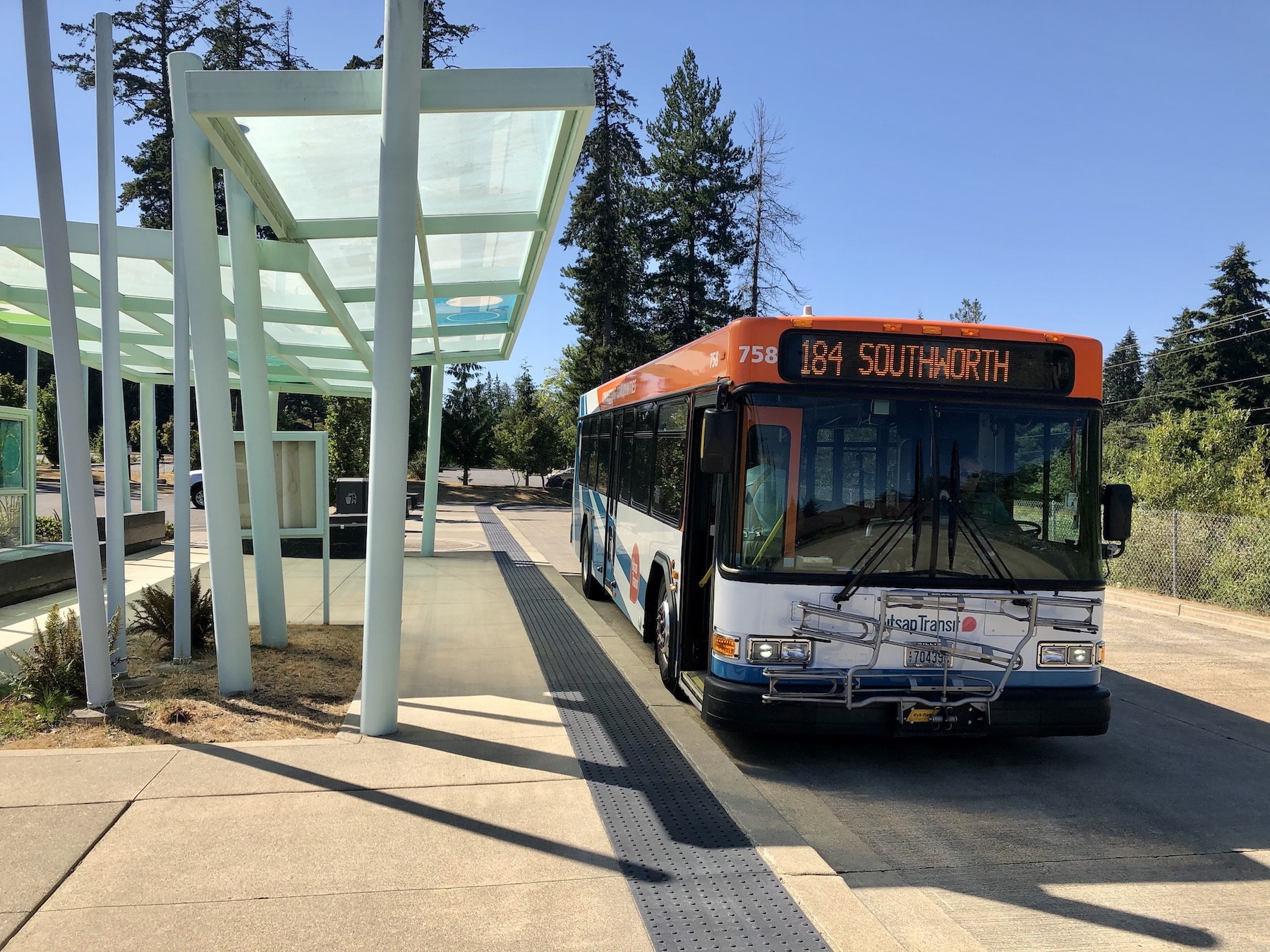
Several buses run to the ferry dock. This one is picking up riders at the Harper Church park-and-ride lot.
“It works fine for me, but it would be great to have ferries in the middle of the day for people not commuting for work,” she said.
Fast ferry operates on Saturdays during summer
The ferry runs a fuller schedule during summer Saturdays, with 11 round trips throughout the day. The final boat departs Seattle at 11:15 p.m., offering a ride home from night events. Saturday service ends on Sept. 24. The route doesn’t operate on Sundays.
“I’ve definitely taken it on Saturday,” Blender said. “Anytime I can avoid driving to Seattle I do it.”
The cost of driving around versus taking the ferry is a wash. The 40-mile round-trip drive to Southworth at 25 mpg and $4.19 per gallon would cost $6.70 plus the $12 ferry fare for a total of $18.70. Travelers would have to add $2 for the shuttle bus or $5 for parking. Driving back and forth 82 miles to Seattle would cost $13.74 for gas and $5.25 for the bridge toll for a total of $18.99, plus an average of $24 for parking.
Kitsap Transit Executive Director John Clauson says there’s plenty of room for Gig Harborites. The Enetai was built large enough to load from the car ferry slip, which resulted in more seats than initially needed.
“It’s hopefully a solution that would work for folks and benefit the region, not just Kitsap County,” he said. “If we can pull cars off of I-5, we’re all going to benefit from that.”
Consistent, predictable voyage time
The foot ferry takes roughly the same amount of time to make the trip on every sailing. That’s an advantage over a bus or car. You can never be sure how long the drive will be, Clauson pointed out.
“The biggest message there is the variability,” he said. “It fluctuates. It’s not consistent. It can take 40 minutes, 30 minutes to in excess of an hour just to get from Federal Way to downtown Seattle.”
Kitsap Transit doesn’t market the fast ferry to the Gig Harbor area so it’s “probably the best-kept secret down there,” Clauson said, but it might be an alternative worth exploring.
“It’s much nicer to sit in a vessel where you can look at the scenery and read your paper and do whatever as opposed to gripping a steering wheel on I-5,” he said.
Sound Transit Express bus costs just $3.25
Though Bien prefers the fast ferry to the bus, Sound Transit’s Express 595 is an inexpensive but inflexible alternative for commuters. The bus ride costs just $3.25 each way between Gig Harbor and Seattle, but offers only three early-morning departures and three late afternoon/early-evening return trips.
The route begins at the Purdy park-and-ride before stopping at the Kimball Drive lot. It leaves there at 5:10 a.m., 5:58 a.m. and 6:50 p.m., and, after three stops in Tacoma, arrives at Seattle stops in 64 to 81 minutes, according to the schedule. It doesn’t operate on weekends.
There are advantages for those who can abide the limited schedule.
“You will not be sitting behind a steering wheel while in soul-crushing traffic and watching the needle on your gas gauge drop,” said Sound Transit spokesman John Gallagher. “You can sit back and read a book or work on your laptop.”

